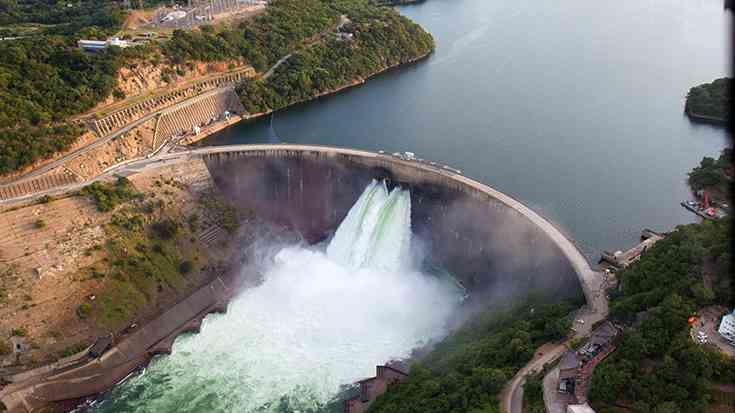
FUNDERS of the Kariba Dam Rehabilitation Programme (KDRP) have bemoaned delays in the completion of the project which is now in its seventh year from the initially projected three years.
The US$294 million KDRP includes the rehabilitation of Kariba Dam infrastructure by reshaping the plunge pool and rehabilitating the spillway. The reshaping of the plunge pool is expected to limit the scouring and erosion of the dam wall structure, while the spillway gates are being rehabilitated to avoid possible jamming in the open or closed positions which could result in dam failure and catastrophic loss of lives, livelihoods, assets and electricity.
The project is being funded by the European Union, World Bank, African Development Bank (AfDB) and the Swedish government.
Speaking during a high-level visit to the project by government officials from Zimbabwe and Zambia, financiers and Zambezi River Authority (ZRA), World Bank country representative for Zimbabwe, Eneida Fernandez, said the project had faced challenges over the years despite the significant progress made so far.
“The project has faced challenges over the years, including the COVID-19 pandemic, the complex geological issues and technical requirements, disruption of supply and protracted procurement processes, among others,” she said.
“Despite these challenges, today we stand here to witness some notable progress on implementation of the plunge pool and it’s gratifying to see that co-ordination and co-operation has yielded positive results, resulting in over 80% completion of the project at the plunge pool.
“While we are very happy with the achievement of this milestone, we want to take this opportunity to raise concerns regarding the risk of delays of the spillwater rehabilitation.”
Fernandez said mitigation of these delays would require concerted efforts to accelerate works and ensure completion of the remaining rehabilitation activities.
- ZVDT laments lack of development in Zambezi Valley
- €30m set for Kariba Dam wall rehab
- Letters: Democratise natural resource governance
- Lubimbi villagers relocation set for next year
Keep Reading
“We urge ZRA, the consultant, and the contractor to address all key issues affecting the spillway works. It has taken tremendous efforts to align resources and support for the rehabilitation of this critical dam, I sincerely hope that we utilise this window of opportunity to complete the required rehabilitation works and safeguard regional energy security for generations to come,” she said.
Fernandez also expressed the financiers’ commitment to support Zimbabwe and Zambia in timely resolving the challenges experienced by the project.
“We will continue to support an innovative sustainable economic development agenda to improve the lives of the people of Zambia and Zimbabwe and the region,” she added.
Officiating at the event, Energy and Power Development minister Edgar Moyo said, while the project has encountered several challenges everyone involved have enough capacity to resolve them.
“We, therefore, urge all of us to respectively contribute to the successful delivery of this project. I am, therefore, pleased to inform you that the governments of the Republics of Zambia and Zimbabwe are committed to ensure a successful completion of this major project, as it is one of the key sources of clean, affordable and sustainable electricity for our country and the Sadc [Southern African Development Community] region,” he said.
“I wish to encourage the contractors to diligently deliver quality works on schedule to ensure that the governments of Zambia and Zimbabwe, as well as the cooperating partners, derive value from this project.”
According to Moyo, the KDRP will contribute to Zimbabwe and Zambia energy security and socio-economic development as espoused in their respective national energy policies and development plans.
He also noted that the project would restore the dam to internationally acceptable operational standards, facilitating the sustained generation of electricity.
“This will support our government’s objective of promoting deployment of other renewable sources such as solar and wind energy, considering that the uptake of these safe and renewable energy sources requires reliable electricity,” he added.
The rehabilitation project is expected to increase the dam’s lifespan from 50 to 100 years and benefit three million people through risk reduction and mitigation, while assiting in sustaining power generation estimated at 10 gigawatts annually.
The AfDB and World Bank have each provided US$75 million towards the project, while Sweden disbursed US$25 million.







